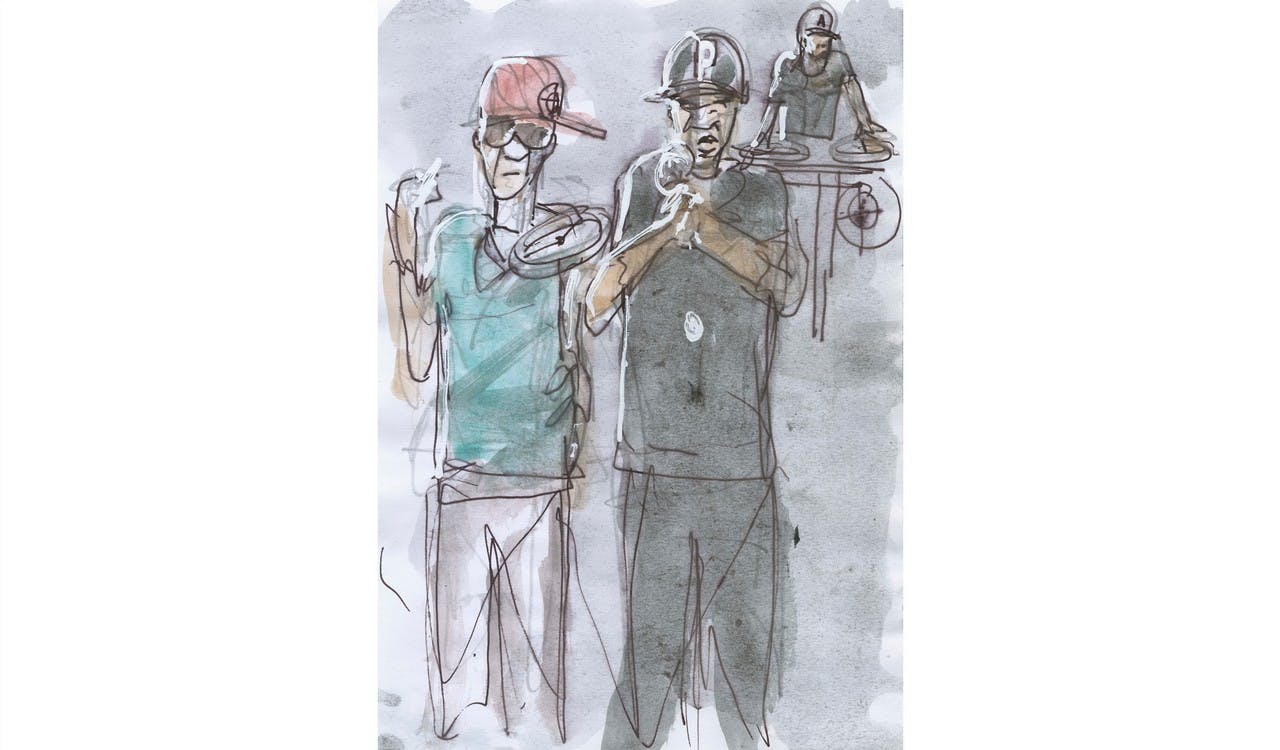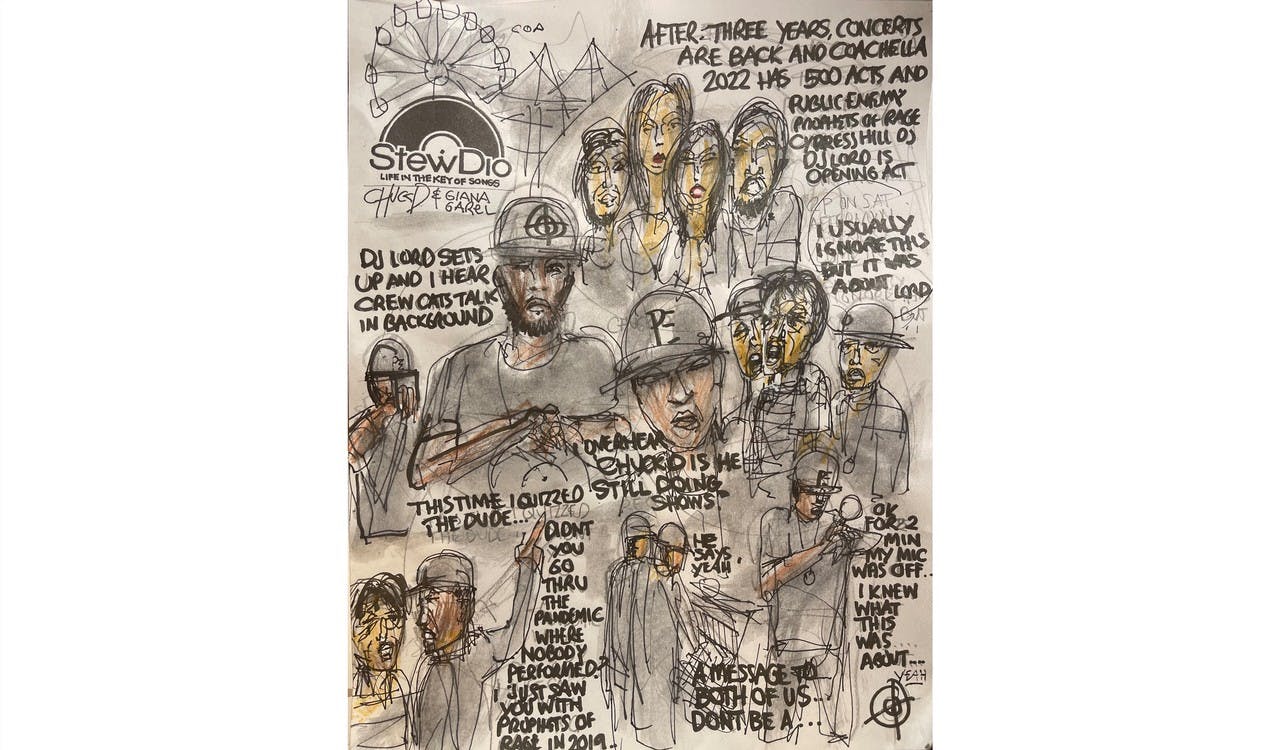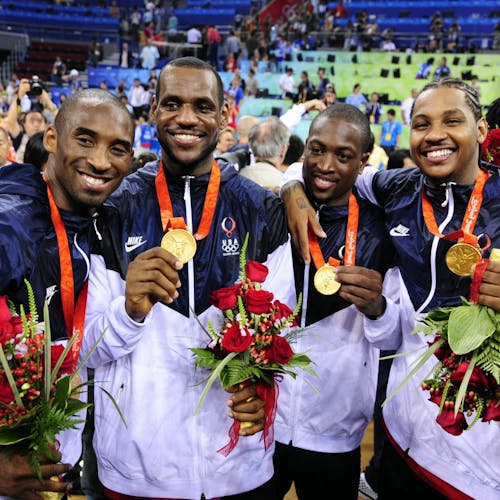
Chuck D On His Art: "I Don't Sell Myself..."
Chuck D On His Art: "I Don't Sell Myself..."
By Kyle Eustice
Published Wed, October 12, 2022 at 2:00 PM EDT
Public Enemy frontman Chuck D has been “fighting the power” for over three decades, delivering several iconic albums — including 1988’s It Takes A Nation of Millions…To Hold Us Back, 1990’s Fear of a Black Planet and 1991’s Apocalypse 91…The Enemy Strikes Black — that rattled mainstream America.
Shrouded in rap bravado, his revolutionary cries for equality left an indelible mark on Hip Hop culture and inspired generations to come. At 62, the Rock and Roll Hall of Fame inductee is writing another chapter in his life. On November 29, Chuck D will release his first fine art book titled Livin’ Loud: ARTitation, a collection of artworks that continue to address the complex socio-political issues he dissects in his lyrics.
“This is a great answer to the rest of my life,” he tells ROCK THE BELLS. “That’s the same way I started out.”
Armed with a Bachelors of Fine Art and honorary doctorate degree in graphic design from Adelphi University — where he was the school’s cartoonist from 1978 to 1984 — Chuck has utilized his art skills in all facets of his career. In fact, he’s the mastermind behind the Public Enemy logo. Behind the scenes — whether on tour in France or having lunch in Los Angeles — he’s always sketching his surroundings, although he only recently rediscovered his passion for it.
“I didn't fully get back into my art bag until maybe 2015,” he explains. “I wanted to develop myself as an artist. My thing is, I'm not a painter. I'm an illustrator and I do illustrations. I wanted to train and work on my illustration speed, like courtroom illustrators. And I call it courtroom speed. But once upon time, you couldn't take a camera in a courtroom. So the illustrator had to go in there, map out the figures, map out the courtroom and get across to the news station for airing. So technology has made that easier.

“Social media has made it easier. The advantage to social media is that you can work quickly and then you can upload. So the same impact that it made in music, has even made more of an impact when it comes down to the arts because art is visual and people operate on social media where sight is even more important than the sound.”

Boasting over 250 original drawings, Livin’ Loud includes sketches of James Brown, Woody Guthrie, Run-DMC, Ice Cube, Run The Jewels, Beastie Boys, a host of baseball and basketball-related images, and landscapes from his tours with Prophets of Rage — as well as the socio-political issues plaguing the United States.
“I'm pretty diverse,” he says. “I don't sell myself and I'm a very private person, so I'm not going to be up there like, ‘OK. I got this food. Here’s a picture of it.’ I'm not on Instagram and I'm not on Facebook. We come from a world of the last century where you had to do real things in real time, for real people, face to face and eye to eye. You couldn't get caught up in the screen, but everybody is on the screens today. This is one of the reasons why my art works, because people are fixated by what they see.”

But at the end of the day, art is something Chuck ultimately does to help him make sense of the world spinning around him.
“I don't make art for people,” he says. “I make art for me and it's a therapeutic religious experience. There's universe within. It's hard to explain. I tell people, whether it's art or music, that's my high. And there's no reason to get double high, because if you're really in tune with your art and you're in tune within, you don’t need that. Everybody has art in them. The process of getting art out of them is the deal.
“The imagination is the thing that actually spearheads my art. You got to dig within. Own the line, own the paint—that's your soul. Those are my rules as far as going into art. So I don't care if something looks like a person or not. It's about, ‘Can I grab the essence of their soul? Can I bend the line to almost give that soul a movement?’ It's a big difference when a person's alive or have passed away. Somebody's passed away, you've got their shell and you say, ‘Well, I don't even know if that's really that person that I knew all this time.’ But when that person's alive, it's more than their body that's alive, it’s something that's through the eyes. It's the same thing with art. Souls ring in artwork. If you look at paintings, paintings freeze the essence of the soul of the particular time.”
Anyone who peruses Chuck’s Instagram or Twitter accounts will see examples of his illustrations, and many are shocked by his artistic aptitude. But Chuck?
“I was always cocky as an artist, not so much as a rap musician, but when I used to look at guys like Basquiat, I used to say, I could get at that cat,” he says with a laugh. “So I was really kind of cocky. I was cocky as a graphic artist. You got to have a little confidence and a little cockiness going on with you.”
As celebrated as Chuck is for his work with Public Enemy, he’s managed to stay grounded. Interestingly enough, a rap career was something he never pursued on his own. He’ll be the first to admit he was opposed to it for years. Although Def Jam Recordings’ co-founders Rick Rubin and Russell Simmons finally were able to sign Public Enemy, it took a lot of convincing.
“Public Enemy came about because everything I've done, I've been asked to do,” he says matter-of-factly. “I was asked to do Public Enemy by Rick Rubin and Bill Stephney. I rejected Rick. Listen, I'm the first dude that rejected record labels. I rejected Rick Rubin for two years. I was asked to do Prophets of Rage. I was asked to do artwork. I've never been that person to go out and sell myself. So this book is something that came along and they said, ‘Chuck, would you be open to doing this?’ And then I agreed. Everything that's great that has happened in my life, I never was like, ‘Oooh can I do this?’ I never asked to do Public Enemy. I was asked to do Public Enemy, damn near begged.”
Thirty-five years have flown by since Public Enemy released its debut album Yo! Bum Rush The Show and since then, he’s sold millions of albums and rocked countless stages around the world. Needless to say, Chuck has carved out a legacy that will stand the test of time. But Hip-Hop continues to be one of the only genres that frowns up artists rapping in their 40s, 50s and 60s — although that’s started to change over the last couple of years.
“I think ageism is close to racism, so I get it,” he says. “Whenever you got the -isms — sexism, racism, ageism — they all happen to float around Hip-Hop, because you're dealing with Black people in Black art, so there's a lot of misunderstandings and a lot of tags are applied."
DROP YOUR EMAIL
TO STAY IN THE KNOW

I think ageism is close to racism, so I get it...”
“Although rock & roll is also Black art, the face of it is never tagged as a Black person, so it ends up being sort of ageless, raceless, sexless, and it's just rock & roll. When it comes down to anything, it's only as good as the people who take care of it. If you don't take care of it, you going to lose the narrative. So I've never done art or music caring about what the next person would think. Now, when you collaborate with partners, you have to adhere a little bit. But as far as me deep inside, I don't write records for anybody else. I don't do art for anybody else. People have a choice to say they dig it or they don't. And I'm good with either one.”






